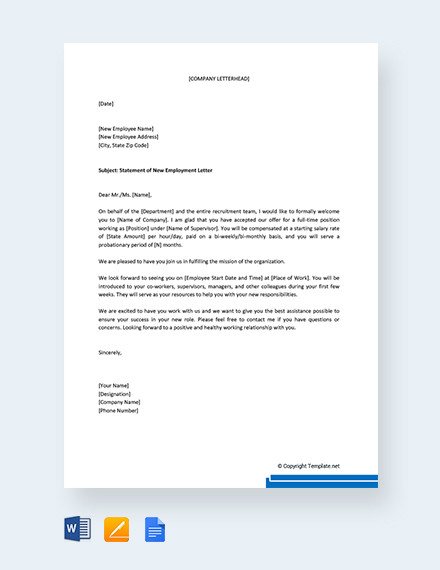Crafting a compelling written statement is an essential skill that can yield powerful results. To learn how to write a written statement effectively, focus on clarity, conciseness, and honesty. Begin by clearly stating your purpose and supporting it with relevant details. Then, organize your thoughts logically to create a persuasive narrative. Practice makes perfect when it comes to mastering the art of writing a written statement. Take the time to refine your skills and communicate your message with impact. How to write a written statement? Let’s dive in and uncover the key elements together.
How to Write a Written Statement
In many situations, whether it’s for school assignments, job applications, or legal matters, you may be required to write a written statement. A written statement is a formal document that presents facts and information clearly and concisely. It is essential to know how to write an effective written statement to convey your message accurately. In this guide, we will explore the steps and tips you need to create a compelling written statement.
Understanding the Purpose of a Written Statement
Before diving into the process of writing a written statement, it’s crucial to understand its purpose. A written statement is a way to communicate your thoughts, experiences, or accounts of events in a structured manner. Whether you are providing a personal statement, a witness statement, or a statement of purpose, the goal is to convey information in a clear and logical way.
Identifying the Type of Written Statement
There are various types of written statements, and each serves a different purpose. Before you start writing, identify the type of statement you need to create. Some common types of written statements include:
- Personal Statement
- Witness Statement
- Statement of Purpose
- Legal Statement
Gathering Relevant Information
Once you know the type of written statement you are writing, gather all the relevant information you need to include. This may involve reviewing documents, recalling specific events, or conducting research to support your statement.
For example, if you are writing a personal statement for a college application, you may need to gather information about your academic achievements, extracurricular activities, and career goals. If you are writing a witness statement for a legal case, you may need to recall details of the event or incident you witnessed.
Structuring Your Written Statement
Organizing your written statement is crucial to ensure clarity and coherence. A well-structured statement will help the reader follow your narrative and understand the points you are trying to convey. Here are some key elements to consider when structuring your written statement:
Introduction
Start your written statement with a concise introduction that provides an overview of what the statement will cover. Clearly state the purpose of the statement and introduce the main points you will address.
Main Body
The main body of your written statement should present the information in a logical sequence. Divide your content into paragraphs or sections to address different aspects of the topic. Provide detailed explanations, examples, and evidence to support your points.
Conclusion
End your written statement with a strong conclusion that summarizes the key points you have made. Reinforce the main message of your statement and leave a lasting impression on the reader.
Writing Clearly and Concisely
When writing a written statement, it is essential to communicate your ideas clearly and concisely. Avoid using jargon or complex language that may confuse the reader. Use simple and straightforward language to convey your message effectively.
Here are some tips for writing clearly and concisely:
- Avoid unnecessary words and phrases
- Use active voice to make your writing more engaging
- Be specific and precise in your language
- Organize your ideas logically
- Use transitions to connect ideas smoothly
Editing and Proofreading Your Written Statement
Once you have written your statement, take the time to edit and proofread it carefully. Check for spelling and grammar errors, consistency in formatting, and clarity of expression. Editing your statement will help improve its overall quality and ensure that your message is conveyed effectively.
Consider the following when editing and proofreading your written statement:
- Read your statement aloud to check for flow and coherence
- Ask someone else to review your statement for feedback
- Look for repetitive or redundant phrases
- Ensure that your statement is well-organized and easy to follow
Seeking Feedback and Revising Your Statement
After editing your written statement, seek feedback from others, such as teachers, colleagues, or mentors. Their input can provide valuable insights and help you identify areas for improvement. Consider revising your statement based on the feedback you receive to make it more effective.
Remember that writing a written statement is a process that requires time, effort, and attention to detail. By following these guidelines and tips, you can create a well-crafted written statement that effectively communicates your message and achieves your intended purpose.
Writing a written statement may seem daunting at first, but with practice and guidance, you can master the art of crafting compelling statements that leave a lasting impact.
Good luck with writing your next written statement!
HOW TO WRITE YOUR GRADUATE SCHOOL APPLICATION STATEMENT OF PURPOSE | THE FIVE PARAGRAPH S.O.P.
Frequently Asked Questions
What are the key components of a written statement?
A well-written statement should include an introduction, detailed body paragraphs, and a conclusion. The introduction should clearly state the purpose of the statement, while the body paragraphs should provide specific details, examples, and supporting evidence. The conclusion should summarize the main points and reiterate the key message.
How should I organize my thoughts before writing a statement?
Prior to writing your statement, it is crucial to outline your main points or arguments. You can create a list or a mind map to organize your thoughts cohesively. Consider the logical flow of your ideas and ensure that each point supports your main argument effectively.
What is the importance of proofreading and editing in a written statement?
Proofreading and editing are essential steps in writing a statement as they help ensure clarity, coherence, and professionalism. Take the time to review your statement for grammatical errors, typos, and overall structure. Editing allows you to refine your language, improve sentence structure, and enhance the overall quality of your statement.
Final Thoughts
In conclusion, writing a clear and effective written statement revolves around structure, clarity, and relevance. Start by outlining key points concisely and providing supporting evidence. Ensure that your statement is organized logically and flows smoothly from point to point. By following these steps, you can craft a compelling written statement that effectively conveys your message. Remember, knowing how to write a written statement is crucial for presenting your ideas persuasively and convincingly.








